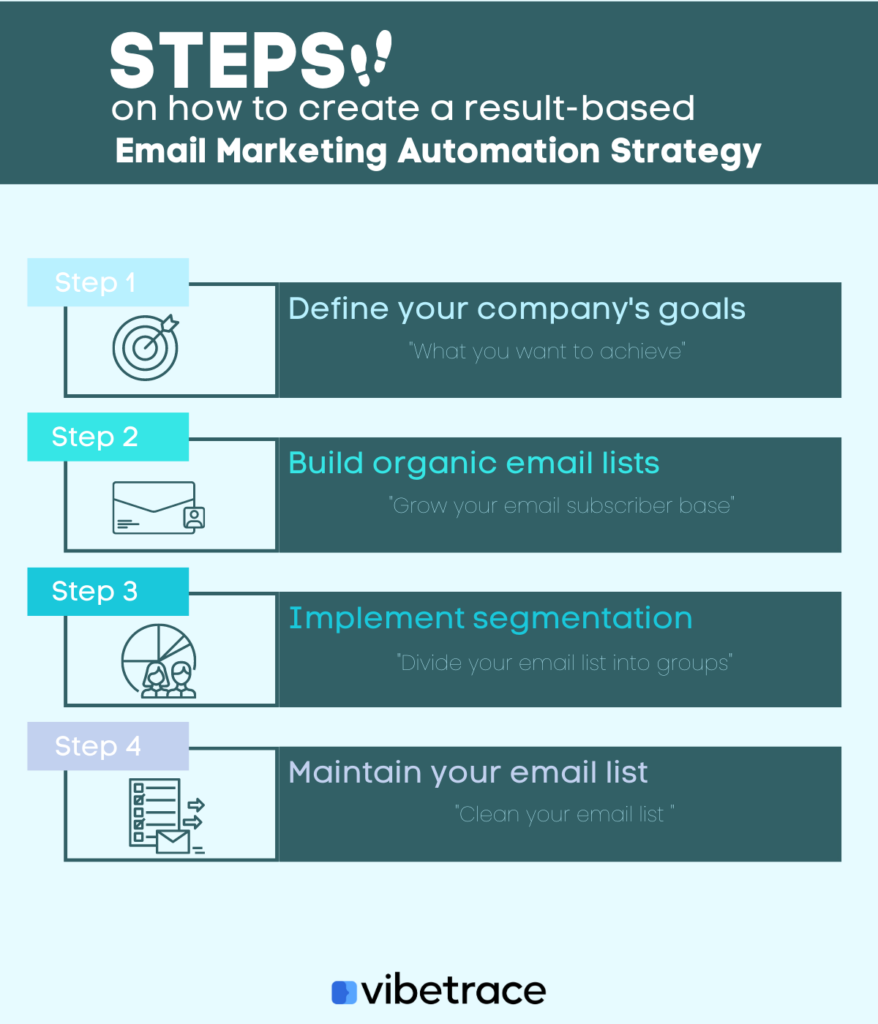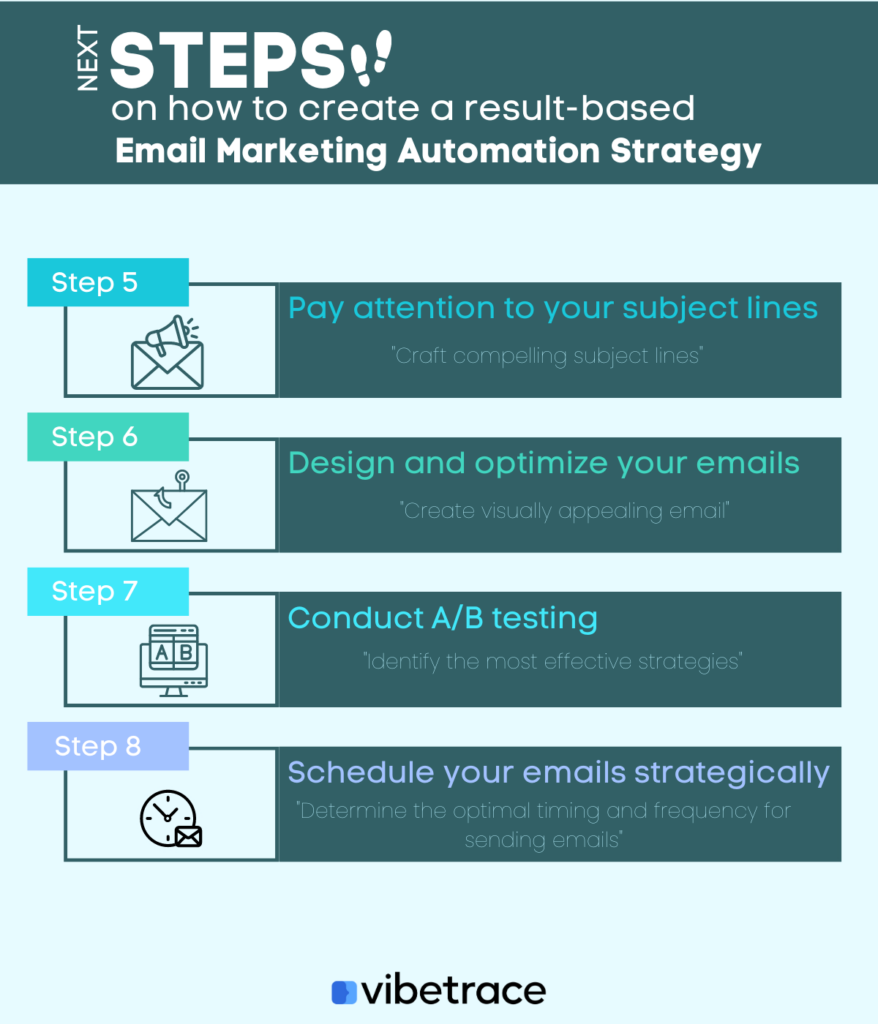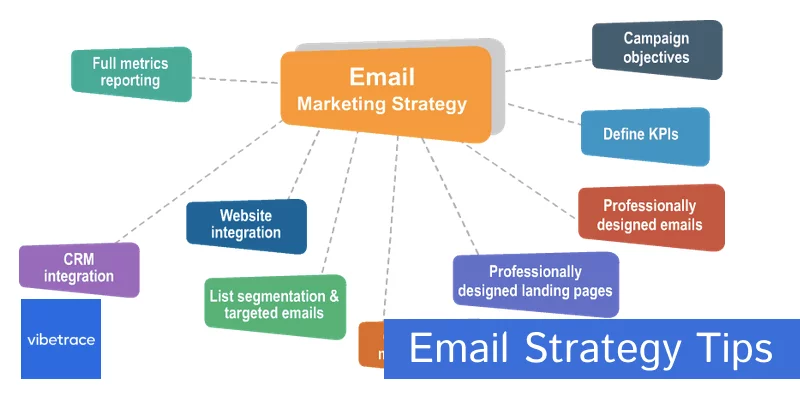Having a strategy is vital for almost everything when speaking about a great business.
We all know that, with the right approach, your entire Marketing Strategy, especially when automated, can face great success.
Pay attention to your businesses and your user’s wants and needs and take a look at how to expand your opportunities with the right strategy. But you may ask, what is an Email Marketing Automation Strategy?
Knowing that email marketing automation is the action of sending email campaigns automatically, without the need to type emails manually every time you need to, with the help of an Email Marketing Automation Tool.
An Email Marketing Automation Strategy is basically having a plan of action in order to drive conversions, boost your revenue, and improve efficiency.
Still wondering why having an Email Marketing Automation Strategy is so necessary? Take a look at these statistics:
- 91% of marketing automation users agree it is “very important” to the overall success of their online marketing activities
- 4 in 5 users increased their leads by using marketing automation software and 77% had an increase in conversions.
- Businesses that implement marketing automation experience an average of 451% increase in qualified leads
But how can YOU reach such numbers for your business? Stay with us if you want to learn about the best steps for implementing such a strategy.
Steps on how to create a result-based Email Marketing Automation Strategy
Now that we know how a well-crafted strategy can change your entire email marketing automation results, let us introduce you to a few steps that you can try implementing in your business.

Define your company’s goals
What is a strategy without having a goal to follow? You should always have your goals sorted when starting an email campaign in order to know what your next steps should be.
Having a bullet list like the one we will show you right now, can actually change your point of view about your campaign and boost your results.
Let’s say we are starting an email campaign for the upcoming Christmas, our goals would look like this:
- Increase sales
- Build relationships with our existing customers
- Increase brand loyalty
- Increase web traffic
- Acquire new customers
Depending on the campaign, the needs of your company, the period of the year, or your user’s behavior, consider having an on-point list every time you want to start new things, you should really see results and feel more confident about your campaign.
Build organic email lists
We all know that sometimes you can struggle with having an organic email list that actually reaches the right people. But what is an organic email list and how do you get one?
An organic email list is a list of emails from people who are interested in your industry, niche, or products and WANT to hear from you and your business.
Having an organic email list is crucial in order to have a successful email marketing automation strategy. Why? Because it helps establish brand awareness and acquire new leads.
Also, your emails are likely to be opened and read if sent to the right people, but with a purchased email list, you’re most likely to be ignored because it reached the wrong or uninterested audience.
Our recommendations in order to build your list organically are:
- Including a “Subscribe” button somewhere visible on your website
- Offering free stuff to users in exchange for their email IDs (depending on your industry, it might contain free trials, webinars, or samples of products, discounts, special offers, etc.)
- Surprise pop-ups (especially when a user is close to leaving your website)
There are a lot of ways to build your list, just don’t buy them from the internet! And also, keep your list updated, people tend to change their email addresses.
Want to be up to date with Marketing?
Subscribe to our Retail CX newsletter!

Stay connected with what’s really important to optimize your digital revenues.
By clicking the button, you accept our Terms & Conditions. Also you will need to confirm your email address.
Implement Segmentation
Having things sorted and organized can most of the time bring better results. That’s how it works with emails too.
Segmenting your email list basically means sorting users based on well-determined criteria, so that your email marketing automation strategy works efficiently and brings results. Some of the most common parameters of email segmentation are:
- User behavior and engagement (from welcome emails to abandonment of carts, interests, inactivity, etc.)
- Demographics (location, age, gender, etc.)
- Lifecycle stages of users (Awareness, Engagement, Evaluation, Purchase, Product and Support Experience Bonding/Advocacy)
- Buying Frequency
By segmenting, you can target the right customers without disturbing the ones that are not interested in a specific topic. Also, segmentation can help you personalize your emails better, helping you get rid of generic emails that have a low open rate.
- Segmented personalized automated email messages average 46% higher open rates than normal marketing messages.
Maintain a healthy and updated email list
As mentioned earlier, people tend to change email addresses, 30% of users change it yearly! Sounds crazy, right? Well, we don’t need to have a list with email IDs that are inactive or that have been deleted or set inactive.
You don’t really need to keep all of the emails on your list, especially if they are inactive. It won’t do anything for you but lower your engagement levels.
Luckily, with the use of Email Marketing Automation Tools, you can delete unwanted email addresses without having to manually do that for hours.

Pay attention to your subject lines
When your users receive your email, the first thing they might notice is your subject line. Is it catchy? Is it relevant? Most of the time, the subject lines are the barrier between opening or ignoring an email.
What is an email subject line? The first words a reader sees after your sender name when they receive your email. Basically, the subject line affects your open rate directly, so make sure your subject lines are always catchy, brief, and informative.
Don’t ever include spam words in your subject lines or things that can trigger a user to not open your email and consider it fake or spammy.
- Over 26% of emails with a personalized subject line have better chances to be opened, due to their unique and specific approach.
There is no written way of writing your subject lines, but in order to make your Email Marketing Strategy effective, we suggest you to:
- Include reader’s names in the subject lines
- Keep it short and informative
- Avoid words such as “free”, they usually end in the spam folder
- Try engaging your readers by asking a question
Design and optimize your emails
An attractive email is “the deal” these days and can boost your conversion rate more than you can imagine. Why? Because people tend to “scan” your email first before reading it.
A well-design email might be a great choice for creating an amazing email marketing strategy.
And don’t forget about mobile-friendliness! Optimize your design in order to keep it mobile-friendly, easy to read, and aesthetic for your readers, because most users read emails on their phones!
- Use vertical layouts
- Pay attention to how many images you use and the size of them
- Keep sentences and paragraphs short
- Use proper call-to-action buttons and make them visible (A call to action (CTA) is a prompt on a website that tells the user to take some specified action, such as “Sing Up” “Buy Now” etc.)
- Preview everything from a phone also before sending!
So as we said before, keep in mind that an amazing, optimized, and easy-to-read design can show better results in your email marketing automation strategy.
You need to pay great attention to each and every detail, whether the readers use their personal computer or their phones.
Conduct A/B testing
A/B testing is one of the most valuable things you should consider when preparing your Strategy. It can provide valuable insights into what you should and shouldn’t do in terms of Email sending, which can lead to better results.
What is A/B testing? In short terms, A/B testing is a type of online experiment that is carried out on a website, mobile application, email, or advertisement to assess prospective changes in contrast to a control, or original, version.
Try templates, a variety of subject lines, designs, and email content. With the help of A/B testing, you can see what works in terms of design (font, colors), optimization (call-to-action buttons, sizes), and overall personalization.
Take some time to analyze what works better by understanding your user’s behavior, which may hold valuable insights for your Email Marketing Automation Strategy.
Track down any info that you find important from open rate to bounce rate.
Schedule your emails strategically
Deciding when to send emails is important when creating an email strategy. In order to decide that, remember to pay attention to your campaign’s objectives, your needs, and your user’s behavior.
You may already know and have experienced it yourself, being sent way too many emails or none at all can lead to unsubscribing really fast.
We really don’t want that from our strategy, we just need to focus on building strong relationships with our users, right?
Being in touch regularly is one of the main things you should do in order to see better results. With the help of automation, your work would be easier to finish, and you can easily analyze the responses.
Question: How many emails can I send per week?
Depending on your campaign’s objectives, you can send out to 3 emails per week without annoying your readers. Just make sure you send relevant emails following the steps we mentioned earlier.
You are ready to create an amazing Email Marketing Automation Strategy!
Congratulations! Now you know the most important steps in order to get the most out of your Email Marketing Automation Strategy.
Don’t forget to always try things out before implementing, brainstorm your ideas and understand your goals, pay attention to your wants and needs and a lot more to your users, and don’t be scared to risk it!
Enjoy all of the resources you have from your Automation System and research thoroughly in order to have the best results. Don’t forget to track, analyze and implement!
Hope you had a great time with us today! Don’t forget to check out our last blog post and tell us in the comments if you found this one informative and helpful!

